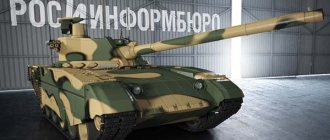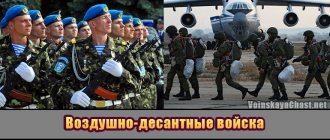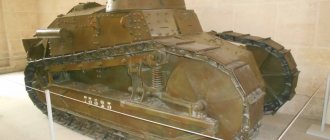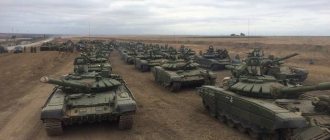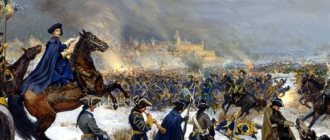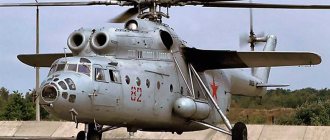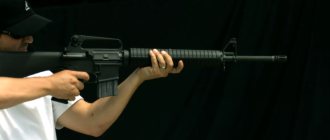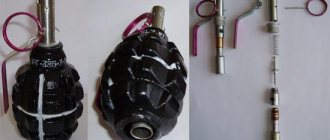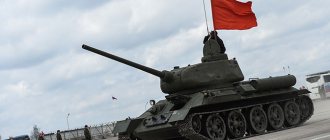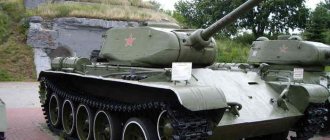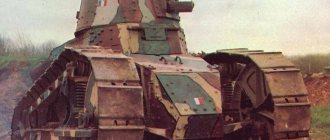T-80 and T-90: How will Shoigu’s tanks fight if they hit hard?
At the tank biathlon competition, which takes place as part of the International Military-Technical Forum Army 2020, the Russian team experienced an embarrassment during a shooting test at a stationary target.
The crew of the T-90A tank was the first to distinguish itself. The first two 9M119M1 Invar-M anti-tank guided missiles, launched through the barrel of a 125-mm cannon, missed the target. And only the third missile hit the target.
A T-80U “jet tank” equipped with a gas turbine engine took to the firing position. He uses the same Invar-M missiles in exactly the same way - the first two misses and the third hit.
The next member of the Russian team, the T-80UE1 tank, experienced a positive change. Only the first missile missed, the second and third hit the target.
And only the T-72B3 demonstrated 100% accuracy using the same Invar-M missiles.
According to the rules of tank biathlon, which are very similar to the rules of regular ski biathlon, the crews used additional ammunition. To do this, the crew had to leave the tank, take two rockets (17 kg) and two propellant charges (7 kg) from the shell boxes, load ammunition into the tank and load the gun. After which additional shooting is carried out.
Comparison of T-64, T-80 and T-72 tanks (from personal experience)
I am constantly reproached for an allegedly biased attitude towards Ukrainian tanks and tank builders. I assure you, I have no desire to discuss with the adherents of Kharkov. I want only one thing - so that Ukrainian armored propaganda does not fill people’s brains. I wish and strive for people to know about what was and what really is. We did not feed on myths and legends. The reader can trust or not trust my words - that is his right. Unlike some, I do not insist on my point of view. But there are facts that cannot be argued against, there are witnesses and direct participants - it’s definitely worth listening to their opinion.
The other day, the editors of the “COURAGE” website received a letter from a tank officer, in which he outlines his experience of “communication” with tanks of the T-64, T-72 and T-80 types. We give his story without any edits or changes on “COURAGE” and in this blog.
I have been following the controversy between adherents of “Ukrainian” and Russian tank building for a long time! To justify what follows a little, I’ll tell you a little about myself. I started studying at the Ulyanovsk Guards Tank School (main tank of study - T-72, additional - T-80), but due to its closure I graduated from the Kazan Tank School (main - T-80, additional - T-64), I have a diploma Honours. So I am very familiar with the subject of controversy. He served on the T-72 tank as a platoon commander, company commander, and chief of staff of a battalion in one of the tank regiments of the Volga-Ural Military District. Participated in the first Chechen campaign: was a platoon and company commander.
Now to the point. The chassis of the T-64 tank is extremely capricious and, so to speak, unusable. When turning in first gear, at high speeds and on heavy soil (wet arable land, tank ruts), there is an incredibly high risk of losing track. At high speeds, if the track is slightly loose, and when turning in higher gears, the sight of a flying track with the fenders turning out will remain forever in the memory! And if the caterpillar has flown off, then towing the tank on heavy soil and sand on rollers is absolutely impossible - the track roller plates get stuck above the balancers!
Perhaps only the lazy did not talk about the notorious torsion shafts. It’s unclear what our Ukrainian opponents are proud of here!
I recently read the following expression: “the openwork tracks and chassis of the T-64 tank.” Rave! Ladies' lace and stockings can be openwork! The chassis of the tank must be RELIABLE and REPAIRABLE! And period! To be honest, I am surprised by the manic commitment of Kharkov residents to a fundamentally flawed chassis. This type is used EXCLUSIVELY on Ukrainian tanks - descendants of the first T-64. If it were really as good as they say it is, then this “brilliant” creation would probably find application somewhere else in the world. In addition to the T-64 tank, the same type of suspension was imposed on PTS and a number of engineering vehicles, which I consider a crime, given their operating conditions.
Over nine years of service during the intensive use - completely barbaric - of T-72 tanks in the mountains and on the plain, as well as the combat use of vehicles in the Chechen Republic, I have NEVER observed a caterpillar fly off the “seventy-two”! Naturally, I exclude the explosion of a tank by a tank mine and other combat damage. I also don’t remember replacing the torsion shafts. Towing a tank without tracks did not cause any problems at all. To “kill” the chassis of the T-72 you need to be an exceptional “dumb boy”! Even a weak track tension did not lead to the vehicle being “unshoeed”, but only to the drive wheel slipping along the track.
Of the negative aspects, I can only remember the not very convenient connection of the tracks with a finger, and not with earrings (so-called “binoculars”), like the T-80 and T-64, but this is rather a matter of taste and a purely subjective assessment.
I have also come across claims that the rubber tires on the road wheels are very unreliable and often fail. Complete nonsense! The vast majority of cars undergoing major repairs after the required mileage were left on rollers with the same tires with which they arrived new from the factory. The breakdown and destruction of the bandages occurred only as a result of a STRONG external impact. And after the introduction of the caterpillar from the T-80 tank, when the tires of the rollers roll along the rubber treadmill of the caterpillar, the T-72 chassis became “eternal”!
The same can be said about the chassis of the T-80 tank. The main problem here was the telescopic shock absorbers. But they changed quite easily and quickly. In general, of the three types of chassis, the T-80 chassis is, of course, the most beloved among the troops in almost all respects. No wonder its elements (caterpillar) were transferred to the T-90 and modernized T-72.
Now about the engine - the “heart” of the car. The T-64 engine (it doesn’t matter which one - 5TD, 5TDF, 6TD, etc.) has only one plus - good overall power and EVERYTHING! This plus is offset by a large number of minuses. First of all: ejection cooling system! After one lap in the summer heat around the tankodrome, I had to “cool down” the T-64. The use of such a system for heavy vehicles, using the example of the T-64, showed its futility. The extremely low reliability of starting a cold engine in winter forced training support officers to come to duty long before the start of classes in order to have time to start all the machines for these very classes.
According to the lubrication system. If you just look at the stern of intensively used T-64 tanks, you will notice that it is literally filled with oil. Oil consumption exceeded all prescribed standards, forcing the heads of the fuel and lubricants service and unit commanders to “get out”. However, a lot has already been written in detail about the shortcomings of the T-64 engine even without me.
And now, in contrast, a little about the engines of the T-72 tanks. In the summer of 1996, during a regimental tactical exercise with live firing on the topic “Tank Regiment on the Offensive,” one of the tanks of my company, due to damage to the radiator at the point of going on the attack, expelled all the water. The tank continued to carry out the task until reaching the line of the regiment's nearest task (in those conditions it was, for a moment, about 25 km). That is, the car - “dry”, in the heat, in difficult conditions, at high speeds - traveled TWENTY-FIVE kilometers before “knocking”!
Of the problems, of course, first of all is the complexity of replacing the engine. Once, when I was a platoon commander, replacing the engine with me, two driver mechanics and periodic assistance from the battalion’s deputy technical engineer, with the assistance of the BREM-1, took almost a day.
The power of the V-84 engine is quite adequate for a tank weighing 46-48 tons.
But of all the engines, my heart is given to the GTD-1250. I know that this will cause a barrage of negativity, but of all the problems that will be brought to my attention, I recognize only increased fuel consumption. All the rest: the difficulty of air purification, high exhaust temperature, etc. have been solved on the latest gas turbines. The main problem with the turbine is its cost. I believe that the reason for the decommissioning and refusal to develop tanks with gas turbine engines in Russia is the poverty of our state. Operation of a gas turbine engine is a song! Easy to start, impossible to overheat, easy to replace, “omnivorous”. However, the decision has already been made a long time ago, and if the Chelyabinsk people manage to make a new powerful and reliable diesel engine, I will be only happy! There have been conversations about the X-shaped engine since I was studying. Although, it should be noted, the Germans manage to create excellent MTU diesel engines using the classic V-shaped design.
The transmissions on all tanks are, in principle, almost the same. Onboard gearboxes have long been outdated... It’s a pity that at one time the Kharkovites first installed them on the T-64 tank, and then this solution migrated to the T-72 and T-80. The rest of the world has followed the path of development of hydromechanical transmission, in contrast to our notorious reduction in cost in exchange for quality...
There is no doubt that promising tanks and heavy vehicles should have a hydromechanical transmission. I’m glad that Russia has realized this and, in addition to the BMP-3, which is already equipped with a GMP, promising models of armored vehicles will also have a similar transmission. All sorts of exotic diesel-electric, hybrid and other transmissions are definitely not for tanks!
Firepower. Oddly enough, let's return again to the chassis: its imperfection in the T-64 leads to shaking and swaying of the tank. And if, thanks to a more advanced control system, the T-64B tank (BV and other modifications) outperforms the T-72B (M), then with the same control system of the “sixty-four” with the T-80B (BV), the accuracy of shooting on the move of the first is noticeably worse.
The loading mechanism (ML) of the T-64 and T-80 is, in principle, the same, and it can only be compared with the automatic loader (AZ) of the T-72 tank. There is only one advantage - the capacity of the rotating conveyor: 28 shots versus 22. But this is compensated by the more convenient placement of shots in a non-mechanized stowage. A typical scheme for placing ammunition in the T-72 during combat operations in the Chechen Republic was to fill the AZ conveyor and place the rounds in a tank rack in the fighting compartment in front of the MTO partition, from where they are easily retrieved and loaded into the gun, or loaded into the AZ. MH requires periodic monitoring and adjustments. AZ has no adjustments at all, everything is done at the factory once and for all. The MZ is distinguished by the unreliability and inconvenience of the trap's cable drive, the unnecessaryness of such an operation as transferring the used pallet from the shot into an empty cassette, which then still has to be removed manually, increasing the time of loading ammunition. In addition, this unnecessary operation leads to high gas pollution in the fighting compartment during intense shooting. AZ simply removes the pallet from the fighting compartment through a hatch in the turret. When loading the MZ, the need to correctly place the shot in the tray and close the cassette with a special key, which is very often lost in a shaking machine, significantly increases the time it takes to load ammunition. In AZ, the shot is recorded in the cassette automatically and does not require training of personnel in the “wisdom” of fastening shells.
Our Ukrainian friends often forget that the loading time of MZ is twice as long as AZ. In addition, the vertical projection of the charges standing “on the butt” in the MG is twice as large as the lying AZ charges, which, when penetrating the hull armor, increases the likelihood of a fire in the fighting compartment. The MZ drive is electro-hydraulic, which, in addition to the complexity of maintenance (addition of fluid), also aggravates the fire hazard. The electric drive of the AZ does not have such disadvantages.
Among other things, in the T-64 and T-80 tanks, due to the peculiarities of the layout, if necessary, it is almost impossible to get out of the control compartment into the fighting compartment, which in some cases cost the life of the driver. A classic situation for the T-72: after the rear of the turret is penetrated by a shell or grenade as a result of damage to the hydraulic drive for the vertical guidance of the gun, the gun barrel rests on the mechanical drive hatch. A fire breaks out in the tower, and before the powder charges ignite, in the worst case, 30 seconds, in the best - up to 15-20 minutes (there were cases when the powder charges only charred, without ignition!). In this short time, it is quite possible for the driver to get out of the tank through the fighting compartment, especially since the gun is lowered as far as possible, which means the breech rests against the roof of the turret and there is plenty of space in it! On the T-64 and T-80 there is practically no such possibility - only theoretically! The driver cannot remove 3-4 cartridges with shots and crawl through the vacant space on his own! This is a fact confirmed by blood. A very recent example: during exercises conducted in Ukraine, a T-64 tank got stuck with its bow in a stream, the driver was in a “combat-like” position. Water did not flow into the car quickly, since the hatch was closed. But the driver was never able to leave the control department and, unfortunately, died... The arrogance and disdain of the Ukrainian designers for the clearly successful solutions on the T-72, despite the remnants of authority that the Kharkov design bureau still had, did not allow the introduction of Tagil-style AZ on tanks T-80UD when deciding on its mass production in the 1980s...
About tank protection. As a practitioner, I trust real-life examples more than theoretical calculations. But here, as you know, there is nothing to compare: the T-64 did not take part in battles (except for fairly episodic battles in Transnistria), but the T-72 and T-80 FIGHTED!
All three of the above tanks used and are still using dynamic protection of the “Contact” type. There are still many such vehicles in service in our army, in Ukraine, and around the world. Only the layout of the boxes differs on different modifications.
And here adherents of Ukrainian tank building are trying to turn disadvantages into advantages. Let me remind you that the fastening of boxes with DZ elements on T-64BV tanks along the sides of the hull is carried out on the load-bearing frame along the rubber-fabric screens, and on the T-72 and T-80 - directly on these screens. It is claimed that this increases the rigidity of the structure and does not lead to separation of the protective parts. This is complete nonsense! When operating tanks in Chechnya, it was precisely thanks to the flexibility of the screens that it was possible to keep the side screens intact when they came into contact with obstacles. I assure you that for a colossus weighing over forty tons and with a power of 700 - 800 (or more) hp. it makes no difference whether to roll up a flexible rubber-fabric screen or a “liquid” lattice truss from thin corners. Here flexibility is an advantage, not a disadvantage. In addition, repairing rubber-fabric screens is much easier.
The placement of emergency protection elements on the turret is apparently optimal on the T-80BV and T-64BV - here the Tagils took the path of simplification. However, the level of security of both the T-72 and T-80 was sufficient to conduct combat in conflicts like the Chechen one. I repeat, we are talking about the mounted dynamic protection “Contact”. I’ll write about later versions - “Kontakt-V”, “Relikt” and Ukrainian samples - another time.
Of course, you can argue endlessly about the advantages of certain samples, but it will be like an argument about whose beloved girl is better - a subjective and purely emotional assessment. Objectively and soberly assessing whose combat vehicle is better: the Russian T-72 and T-80 or the Ukrainian T-64, we must admit that the T-72 is most adapted to the conditions in which it was operated and fought.
In the near future, I want to talk in detail about the combat use of T-72 and T-80 tanks in various armed conflicts, as well as about those cases and examples that I personally witnessed and participated in. And now I would like to write a few general words.
I will take the liberty of asserting that the overwhelming majority of losses of our tanks in all conflicts on the territory of the former USSR occurred as a result of their incorrect use, poor training of crews and improper management of the actions of units and subunits. Losses of Soviet-made tanks in conflicts on the territory of other states, in addition to the above reasons, are also caused by the use of old models against more modern opponents, lack of interaction with other branches of the military, and incorrect planning of operations and actions of troops by the command.
The first operation against Iraq in 1990-91. (“Desert Storm”) happened when I was still a cadet at the school. Thanks to my teachers at the departments of tactics, operation, weapons and shooting, at the department of combat vehicles - they conveyed to us all aspects of battles, pointed out the strengths and weaknesses of all participants in battles on both sides of the front, analyzed with us the techniques and methods of combat, methods of managing units and planning actions, analyzed the features of weapons and military equipment, as they say, “in the heat of the moment”! I would like to note that, as a rule, panic about our tanks arises only among people not directly associated with the Armed Forces.
I understand that everything I wrote concerns tanks that have been in service for a long time, but now tank building has stepped far forward, and with my publication I seem to be somewhat “behind the times.” But everything that is being introduced now (I emphasize - almost everything) existed in prototypes and, at least, in concepts even during my studies at the school, i.e. more than twenty years ago. The notorious “Armata” promises to become something new for me. We're waiting...
The idea of unified platforms has been in the air for a very long time. But only now, when there are all the prerequisites to determine the specific appearance of the cars of the future, has it become possible to begin designing and producing cars of a new generation. It may be good that we missed the stage of saturating the troops with vehicles such as the T-80UD, “object 187”, T-95. But there are often opinions that literally demand that the Ministry of Defense either adopt the T-90AM(SM), then finish the development of the T-95 and hastily accept it, then put it into production “object 640” - “Black Eagle”, or use the experience of the Ukrainians with their Oplot tank (in my opinion, a stronghold of inertia, stagnation and Ukrainian chauvinism!), then almost copy the M1A2SEP from the Americans!!! Why, dear comrades?! These are all tanks (some of them, of course, good) from yesterday and today. Now there is a great opportunity to give the Army a fundamentally new machine, the machine of the future! Provide it with great modernization potential for years to come!
Unfortunately, the specter of “big” wars is becoming increasingly clear, and in the future the intensity and power of conflicts around the world will only increase. And Russia, unfortunately, cannot avoid participating in them... We do not have much time left to saturate the troops with modern models of military equipment and prepare the troops for their use.
Alexander "Antipov" Reserve Captain of the Tank Forces
